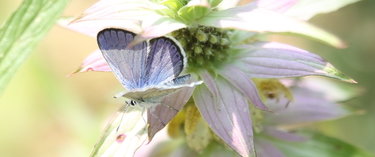The DEC seeks public input on vulnerable species
The state’s Department of Environmental Conservation is seeking data on species status assessments to update New York’s State Wildlife Action Plan for 2025 to 2035.
The plan guides management actions for New York’s Species of Greatest Conservation Need and is a requirement for New York to participate in the federally funded State and Tribal Wildlife Grants Program.
Species of Greatest Conservation Need are native to New York state and currently experiencing threats likely to jeopardize the future of their populations if action is not taken within the next 10 years.
“The preservation of New York State’s iconic wildlife is critical to the long-term health of our environment,” DEC Interim Commissioner Sean Mahar said in a press release on the data collection. “Data provided by the public to help inform the process of updating the State’s Wildlife Action Plan will bolster DEC’s ongoing efforts to conserve wildlife and protect habitats for the enjoyment of future generations of New Yorkers.”
The plan serves as New York State’s guiding document for managing and conserving species and habitats before they become too rare or costly to restore. Congress requires states and territories to develop a plan and update it every 10 years.
One of the species listed as being in greatest conservation need is the Karner blue butterfly, native to Albany’s pine bush.
“The federally and state-listed Karner blue butterfly is completely management-dependent in New York, as is the case in most or all of the remaining portion of the range,” says the DEC document describing the various vulnerable species. “Although about 50 subpopulations exist in NY, these cluster into four metapopulations, or recovery units. Of the 50 subpopulations, the vast majority have fewer than 100 butterflies present.”
The document notes that lupine is the Karner blue’s “sole larval food source” and says, “Currently, the only known occupied sites in New York are clustered in Albany, Schenectady, Saratoga, and Warren counties and represent remnants of two or three once large metapopulations.”
The DEC is seeking public input on additional sources of information on the status and distribution of New York’s species in need, including new information on threats to these species.
The public may nominate a new Species of Greatest Conservation Need, or propose a species be removed from the list. Anyone interested in providing data, updates, or other comments pertaining to the nomination of a new species download copies of a blank form from the DEC website, populate one form per species, and send to by June 17, 2024.
The DEC will provide an opportunity for public comment on the draft list for the 2025 plan later this year. In addition, there will be an opportunity for public review and comment of the updated plan prior to its submission to the U.S. Fish and Wildlife Service.
All input and data are due by June 17, 2024, and may be submitted by email to . Please include “SGCN Feedback” in the subject line.
Questions about the status assessment process may be sent to the State wildlife Action Plan Coordinator at or by phone at 518-402-8858. For more information on New York’s State Wildlife Action Plan, visit the DEC website at https://dec.ny.gov/nature/animals-fish-plants/biodiversity-species-conservation/state-wildlife-action-plan .
— Melissa Hale-Spencer



